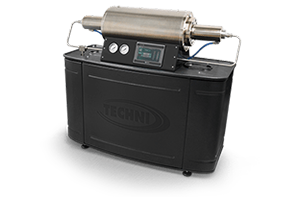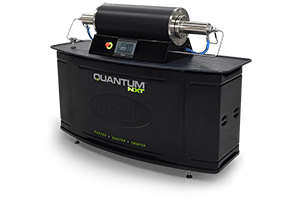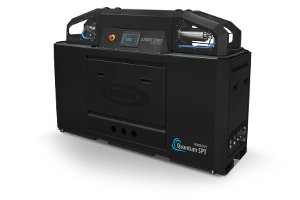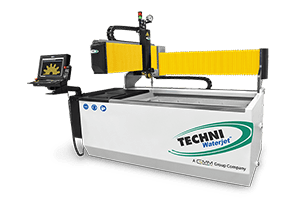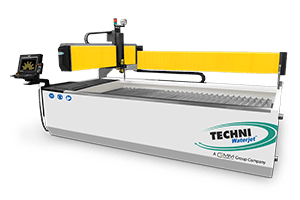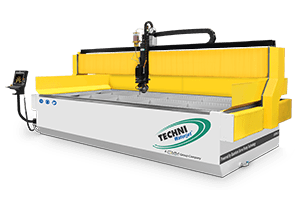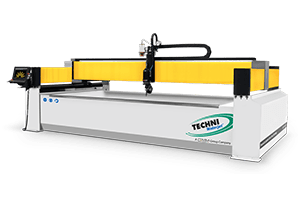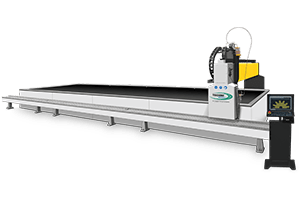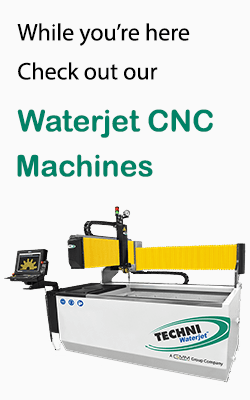Metal cutting processes are the central pillars of raw material processing. Every manufacturing industry uses metal materials or tools. Therefore, metal cutting processes power the entire manufacturing sector directly or indirectly.
There are countless applications of metal cutting processes, each with specific requirements. Therefore, many different types of metal cutting processes have emerged in the industry.
This article will discuss the various metal cutting methods and how to choose one for your requirement.
What is Metal Cutting?
Metal cutting is a subtractive metalworking process of dividing a metal workpiece into multiple parts using force or other erosion techniques. The cutting action can be generated with blades or methods like electrical discharges and water jets.
Who Invented Metal Cutting Processes?
Henry Maudslay is the inventor of metal cutting processes like the lathe. The actual history of metal working dates far back to ancient times like the Egyptian Civilisation. The Late Medieval age saw the emergence of metal punching machines. With the development of electrical components, the metal cutting methods shifted to electrical operations instead of physical. The later development of CNC technology further automated the process.
What are the Uses of Metal Cutting?
Metal cutting is among the most common processes for raw material processing. Metal cutting processes shape raw sheet metal like mild steel for further manufacturing techniques. Advanced metal cutting techniques like waterjet cutting can directly create the final part from raw metal sheets and blocks.
Different Types of Metal Cutting Methods
There are many different types of metal cutting processes. Some of these types are:
Mechanical Cutting
Mechanical cutting methods remove the material by using a sharp cutting tool against the metal. There are mainly four mechanical cutting processes for metals:
Turning
Turning is usually done on cylindrical metal bars and rods with a non-rotary cutting tool. This process is used for making external cuts on the metal. If turning is done from the inside, the process is called boring.
Advantages
- Fast cutting speeds
- Good accuracy
- Less lead time
- Works on all kinds of metals and alloys
- Doesn’t require highly skilled operator
Disadvantages
- Works on only circular parts
- Costly equipment
- Frequent tool wear
- Large amount of removed material
- High heat generation
Uses
- Engine parts
- Shafts
- Holes
- Grooves
- Threads
- Tapers
Milling
Milling uses a rotary cutting tool to remove material from a stationary workpiece. It can use many different types of tools to achieve the desired result.
Advantages
- High accuracy
- Faster cutting process
- Versatile in material application
Disadvantages
- Large amount of excess material
- Requires skilled operator
Uses
- Cutting profiles
- Surface contours
- Die cutting
- Dental Equipment
- Defense parts
Drilling
Drilling is a common metal working process for cutting small diameter holes in metal. It works for metal sheets, blocks, and complex finished parts.
Advantages
- High accuracy
- Best option for cutting small diameter holes
- Works on all material
Disadvantages
- Heat generation
- Limited application besides hole cutting
- High tool wear
Uses
- Holes for secondary assembly of parts
- Screw cavities
- Aesthetic application
Sawing
Sawing is more common for wood-based materials but also works for metals. Sawing uses a toothed cutting tool for slicing through the material.
Advantages
- Cheap cutting process
Disadvantages
- High heat generation
- Faster tool wear
- High kerf losses
- Doesn’t work well for hard metals
- Limited to straight line cuts
Uses
- Pipe cutting
- Tube Cutting
- Sheet metal cutting for small projects
Shearing
Shearing accomplishes the cutting process with the action of blade on either side of the metal sheet. Shearing tools come in many different configurations. Bench shearing is one of the most common shearing techniques for metal cutting.
Advantages
- Low cost
- Simple setup
- No requirement for highly skilled operator
- No temperature rise
Disadvantages
- Low precision
- Only limited to straight cuts
- High tool wear
- Low safety
Uses
- Fast processing of high volume of sheet metal
Punching
Punching uses the physical force of a press to cut out the required shape from the metal. Dies support the metal, and the press is in the shape of the needed cutout.
Advantages
Simple cutting process
- Cheap
- No need for a highly skilled operator
Disadvantages
- A lot of material wastage
- Poor accuracy
Uses
- Cutting basic geometric shapes
Abrasive Cutting
Abrasive cutting processes work by the removal of metal particles. The primary factor here is friction instead of force or sharp edges of the cutting tool.
Waterjet Cutting
Waterjet cutting is one of the best metal cutting techniques out there. Waterjet cutting technique uses the force of highly pressurized water for metal particle erosion. It is a cold cutting process that doesn’t require physical contact of the waterjet cutting head with the workpiece. Waterjet cutting can make linear, non-linear, and internal cuts in a workpiece.
Advantages
- High precision
- No heat effects
- Minimal material wastage
- Fast speed
- High Safety
- Waterjet cutting can cut thick materials
- Works for all metals and non metals
- Superior edge quality
Disadvantages
- Waterjet cutting requires skilled operator
Uses
- Surgical equipment
- Raw material processing
- Metal fabrication workshops
- Automotive sector
- Defense equipment
- Aerospace industry
Grinding
Grinding uses abrasive wheels to remove minimal material from the workpiece. It is generally applied in the secondary finishing processes for metals. The material removed by this process is minimal. However, it does not have any significant cutting capabilities.
Advantages
- It can achieve good surface finishing
- Less material removal
- Good for turning workpiece into precise dimensions
Disadvantages
- Limited capabilities
- Works only for smoothening surfaces and edges
Uses
- Any secondary finishing application
Thermal Cutting
Thermal cutting processes cut metals by melting the material from the required location. Thermal cutting processes have good precision. However, they create heat-affected zones that can ruin the integrity of the workpiece material.
The various thermal cutting processes are:
Laser Cutting
The laser-cutting process uses high-frequency light rays to melt the workpiece. Laser cutting is one of the most precise methods due to the high narrow nature of the laser beam. The laser cutting process is not limited to linear cuts. However, laser cutting cannot create multi-axis cuts.
Advantages
- Laser cutting works on every material
- High precision
- Laser cutting can cut complex shapes
Disadvantages
- Heat affected zones
- Laser cutting has severe limitations on material thickness
- Generation of dross due to oxidation of melted metals
Uses
- Automotive body parts
- Engines
- Panels
- Smartphone bodies
Plasma Cutting
Plasma cutting utilizes an ionized stream of gases to melt the metal for cutting. Once the metal melts, a high pressure air flow blows away the melted material. The ionized jet has a very narrow width, resulting in a high precision cut. An important thing to note is that this method works only on electrically conductive materials. Therefore, any non-conductive metal alloys cannot be cut by plasma cutting.
Advantages
- Plasma cutting is good for materials like stainless steel
- Low cost of consumables
- High precision
Disadvantages
- Formation of heat-affected zones
- It doesn’t work for thicker materials
- Release of toxic fumes
- Generates arc glare
Uses
- Metal fabrication
- Salvage Yards
- Construction projects
- Architecture
Oxy-fuel Cutting
Oxy-fuel cutting is also known as flame cutting. It uses a flammable fuel mixture of oxygen with other gases to generate high temperatures. The high temperatures melt the material, leading to the cutting action.
Advantages
- It is a very portable cutting method
- There is no requirement of electricity
- It is a cheap and simple process
Disadvantages
- It has a very poor accuracy
- There is the emission of toxic fumes
- Poor safety
- It doesn’t work for thicker materials
Uses
- Small-scale metal fabrication workshops
Electrical Discharge Machining (EDM)
Electrical discharge machining works by melting metal through electric arcs. An electrode is brought close to the workpiece without making physical contact. The workpiece is turned into another electrode. On the voltage application, there is an electrical discharge between the two electrodes. These discharges raise the temperature and melts the material.
Advantages
Ability to create non-linear cuts
High precision
Works with hard materials
Disadvantages
- Extremely high power consumption
- Slow cutting speed
- Only works for conductive materials
- Formation of heat affected zones
Uses
- Manufacturing operations of molds and dies
- Making metal tools
Electrochemical Machining
Electrochemical machining combines the use of electricity with chemical reactions to remove the workpiece material. It follows the reverse mechanism of electroplating. It can produce metal parts quite quickly.
Advantages
- Works well with high hardness metals
- It doesn’t create heat affected zones
- There is no tool wear
- Fast speed
Disadvantages
- Costly metal cutting process
- Probability of metal corrosion
- Only suitable for conductive materials
Uses
- Cutting hard materials
- Working on small-scale parts where other methods don’t apply
- Working on complex, non-planar shapes
What is the Most Common Way to Cut Metal?
Drilling is the most common metal cutting process. It is used in conjunction with every other metalworking processes for cutting holes. Milling is most common among industrial applications that involve slicing metal pieces into multiple segments. However, techniques like waterjet cutting and laser cutting are gaining preference due to their benefits.
What is the fastest metal cutting process?
Laser cutting is the fastest metal cutting process. A 1000 W laser can cut 3mm thick carbon steel at the speed of around 3 meters per minute. The exact speed of any metal cutting process depends on the type and dimension of the workpiece.
What is the most accurate metal cutting process?
Waterjet cutting is the most precise cutting method with a tolerance of +/- 0.001″. Laser cutting can also provide similar accuracy to this value. However, laser cutting creates heat-affected zones which reduce its accuracy to some extent.
How to Choose a Metal Cutting Technique?
There are numerous metal cutting methods available for industry professionals. Choosing the right method should be done after evaluating multiple factors. The response to these factors can vary based on the particular project. These factors are:
- Type of Material
- Material Thickness
- Required Precision
- Production Volume
- Cost
- Finishing Requirements
- Cutting Tool Wear
- Environmental Impact
- Operator Skill Requirement
- Workshop Space Availability
- Safety
- Material Wastage
Endnotes
A good metal cutting machine can be the difference between a heap of rejected parts and a good quality outcome.
Waterjet cutting machines by Techni Waterjet has completely changed the landscape of metal processing. These machines can handle any thickness and even create finished metal parts without secondary processing. Techni Waterjet might be something to consider if you are looking for a metal cutting machine.
